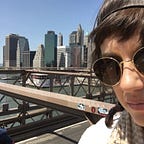The Influential Style of ‘Annie Hall’
How Diane Keaton made menswear must-wear for women in the ’70s and beyond.
“Every time you think of Diane Keaton you immediately think of Annie Hall,” says Maker Studios co-founder Lisa Donovan in her Shortlist recommendation — and considering that Keaton has been in 60 plus features over the course of four plus decades, the first of which was no less a cinematic effort than The [god damn] Godfather, that’s really quite a testimony to the lasting resonance of the endearingly flighty girl from Chippewa Falls.
Indeed, the film that arguably invented the relationship comedy — and solidified the concept of neuroticism as a potentially endearing personality trait — also introduced us to the warm, slightly nervous, occasionally self-deprecating charm for which Keaton would become beloved. (Fitting, considering the character, and thus the film, is named after her: the actress’ original surname is actually “Hall”; she took her mother’s maiden name, “Keaton,” as her own in the ’60s after joining the Actors’ Equity Union because they already had another established actress registered under the name “Diane Hall.”) Diane Keaton nee Hall, in turn, would introduce us to the beautiful concept of borrowed-from-the-boys fashion.
“Move around like a real person. Don’t make too much of the words, and wear what you want to wear,” Allen directed Keaton when they began shooting Annie Hall, the actress wrote in her 2011 memoir, Then Again. What she wanted to wear was what “the cool-looking women on the streets of SoHo” were wearing: menswear. “Annie’s khaki pants, vest, and tie came from them,” she explained. But the now famous bowler hat? That she appropriated from the paramour of The Godfather’s production designer: “I stole the hat from Aurore Clément, Dean Tavoularis’s future wife, who showed up on the set of The Godfather: Part II one day wearing a man’s slouchy bolero pulled down low over her forehead. Aurore’s hat put the finishing touch on the so-called Annie Hall look.”
The iconic film’s lead costume designer, Ruth Morely, was reportedly not a fan of what Elle later called the character’s “masculine-meets-hobo look,” but that didn’t stop the appealingly androgynous aesthetic from infiltrating fashion circles worldwide, much to her surprise, following the movie’s premier in April of 1977. “Now people tell me that all the girls in London and Paris are turned out like Annie Hall,” she told Vogue the following year. “It’s crazy; it’s practically become a household word!”
Ralph Lauren, who had recently made his first foray into the movie business designing costumes for 1974’s Robert Redford/Mia Farrow version of The Great Gatsby, supplied many of the high-waisted, wide-legged pants, collared shirts, and neckties that generations of women would emulate, but even he credited the genesis of the look to Keaton. “Annie’s style was Diane’s style — very eclectic. Oversized jackets and vests, floppy men’s hats, and cowboy boots,” the designer is quoted as saying in Vogue on Ralph Lauren. “We shared a sensibility, but she had a style that was all her own. Annie Hall was pure Diane Keaton.”
Pure Diane Keaton—and pure inspiration to many, including contemporary style icons Alexa Chung, Kendall Jenner, and Elizabeth Olsen—the Annie Hall look at the time of its arrival was a phenomenally progressive leap away from gender-normative fashion. Sure, in the thirties, Katherine Hepburn gained some notoriety as an early adopter of female trousers, and in 1966 Yves Saint Laurent famously introduced “Le Smoking,” a tuxedo-style suit for (gasp!) women. But the anti-patriarchal look didn’t go mainstream until Keaton made it appear effortlessly accessible on screen (and while waiting on line for The Sorrow & The Pity, no less). And it hasn’t gone away since.
Just last year, Ralph Lauren revisited the tomboyish aesthetic with a Fall 2016 collection featuring oversized tweed sports jackets and taupe trousers. In 2013, Bill Cunningham chronicled the return of Annie Hall’s “felt hat that looked as if the cat had slept in it” for The New York Times. Around that time, Harper’s Bazaar cited items from Jil Sander and Louis Vuitton as modern takes on the trend, and in 2009, Vogue Paris revisited the look with model Anna Jagodzinska channeling Keaton.
Not familiar with Jagodzinska? Here’s one you’ll surely recognize: this past fall, no less a certified “It Girl” than model-of-the-year Gigi Hadid suited up in “menswear’s wools, tweeds, and borrowed-from-your-brother coats and khakis” for the September issue of American Vogue. (She imbued the look with “slouchy confidence,” according to the magazine.)
Here, a handful of looks straight from the source (i.e., the movie) that inspired it all.
“I never read that, that was Henry James, right, sequel to Turn of the Screw — My Sexual Problem?”
Annie queues up with Alvy for another round of uplifting World War II documentary cinema (and a completely implausible yet utterly satisfying encounter with one Marshall McLuhan) wearing a flowing, floral spaghetti strap maxi dress over a long sleeve black turtleneck — a trend that appeared again in the 90s before popping up once more just last year.
“There’s a big lobster behind the refrigerator.”
Annie’s borrowed-from-the-boys bit goes ever-so-slightly equestrian for the Hamptons, with a cropped khaki vest and cream scarf, to be topped off later by a brown tweed blazer for a stroll through boyfriends past.
“It Had to Be You.”
Annie ups her collared shirt game singing “It Had to Be You” in a crowded club, while dishes crash loudly and a high-pitched telephone rings in the background, in a pair of so-wide-they-might-be-a-skirt trousers and long, skinny black scarf.
“I got this VW out there…”
But her most iconic ensemble is of course the loose, pleated khakis, black vest, wide tie and bowler hat she wears during her first meeting with Alvy, after a doubles tennis match. She’s all cheekbones and promise, nervous energy and stylish charisma.
And no, Annie. We most certainly do not think you’re a yo-yo.
